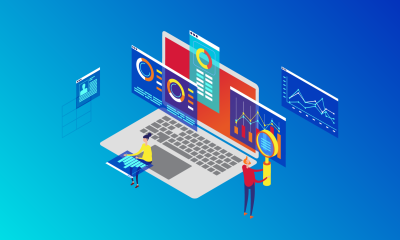
In today's rapidly evolving business landscape, the alignment of IT systems with organizational objectives is paramount. Legacy systems, once robust, now struggle to meet the demands of modern businesses, often proving inflexible and challenging to navigate.
Understanding Software Modernization
Software modernization is the process of transitioning from outdated, legacy tools and systems to modern, flexible counterparts. This transformation may involve converting, rewriting, or porting legacy systems to contemporary programming languages, software libraries, protocols, or hardware platforms.
The Role of APIs and Microservices
Javra recognizes the changing market dynamics and focuses on developing modern applications that use APIs and microservices. These technologies allow monolithic systems to be broken down into task-specific modules, making it possible to create new services and roll out features seamlessly. They enable organizations to build components and services in a modular, scalable way.
Key Considerations in Software Modernization
During the modernization process, it is important to consider several critical factors. These factors require attention.
-
Modularity: Breaking down systems into modular components for enhanced flexibility and scalability.
-
Parallel Development: Facilitating concurrent development efforts to expedite the modernization process.
-
Reusability: Promoting the reuse of components and services across different parts of the organization.
-
Technological Diversity: Embracing a variety of technologies to meet diverse business requirements.
-
Rapid Business Expansion: Ensuring that modernized systems can adapt to rapid business growth and changing market dynamics.
Exploring Business Process Management (BPM)
Business Process Management (BPM) emerges as a powerful tool for optimizing operational efficiency and performance. It encompasses methodologies and solutions aimed at enhancing business processes and workflows.
Leveraging Progress OpenEdge BPM
Progress OpenEdge offers robust BPM features designed to streamline processes and drive informed decision-making. By leveraging OpenEdge BPM, organizations can:
-
Identify bottlenecks and optimize system performance across functional areas;
-
Modify workflows with minimal code changes, enhancing agility and responsiveness;
-
Utilize user-friendly dashboards to monitor application performance and track key metrics;
-
Employ graphical representations and analytics to gain insights into business processes.
Harnessing Progress Web Services
Progress Web Services allow the development of web-based applications, making it easier for clients and servers to interact across various platforms and languages.
Advantages of Progress Web Services
Progress Web Services offer several advantages:
-
Enhancing existing AppServer applications to extend their reach globally;
-
Aligning with Service-Oriented Architecture (SOA) principles for scalable and interoperable solutions;
-
Following industry standards for accessing and invoking operations across diverse platforms;
-
Ensuring platform independence to accommodate a wide range of client environments.
Introducing Kendo UI JavaScript Components
Kendo UI comprises JavaScript UI libraries tailored for jQuery, Angular, React, and Vue frameworks, providing modern, responsive, and accessible user interfaces.
Benefits of Kendo UI JavaScript Components
-
Extensive collection of components compatible with popular frameworks;
-
Comprehensive documentation and demo resources for easy adoption;
-
Dedicated support team recognized for excellence in customer service.
Simplifying Decision Management with Corticon
Corticon simplifies decision management for both IT and business experts by offering a user-friendly environment for modeling, analyzing, and testing business rules.
Progress Corticon ensures:
-
Streamlined modeling processes for capturing and testing business rules.
-
Seamless integration with organizational data for deployment-ready rules.
In conclusion, software modernization is indispensable for organizations aiming to stay competitive in today's dynamic business environment. By embracing modern technologies and methodologies like APIs, BPM, Progress Web Services, Kendo UI, and Corticon, businesses can achieve agility, efficiency, and innovation.
FAQs:
1. What challenges does software modernization address?
Software modernization addresses challenges related to outdated systems, inflexibility, and the inability to meet modern business demands.
2. How does BPM contribute to business optimization?
BPM optimizes business processes and workflows, enhancing operational -efficiency and performance.
3. Why are Progress Web Services important in today's business landscape?
Progress Web Services enable organizations to extend the reach of their applications globally while adhering to industry standards and ensuring platform independence.
4. What distinguishes Kendo UI JavaScript components from other UI libraries?
Kendo UI offers a comprehensive suite of components compatible with popular frameworks, coupled with extensive documentation and exceptional support.
5. How does Corticon streamline decision management processes?
Corticon provides a user-friendly environment for modeling, analyzing, and testing business rules, ensuring seamless integration with organizational data.
Related Blogs
Want to get in touch for solutions tailormade?
Whether you're exploring possibilities or ready to revolutionize your business with customized solutions, our team is here to assist you every step of the way.


